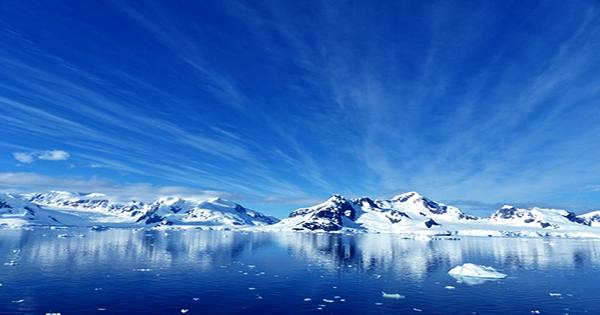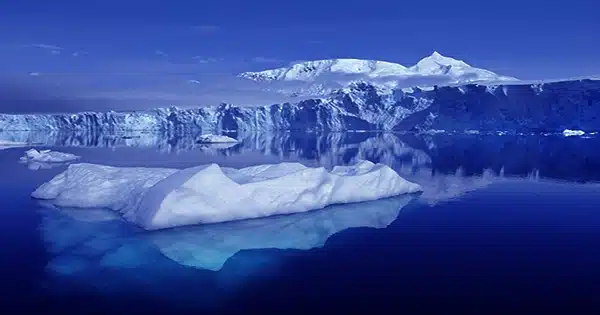A thorough record of the grounding line location of the southern Ronne Ice Shelf in Antarctica has been generated by an international study co-authored by the Scripps Institution of Oceanography at UC San Diego, revealing that it changes up to 15 kilometers (nine miles) with the changing tide.
The study, published on September 26 in The Cryosphere, uses ICESat-2 satellite measurements to provide new insights into ice sheet dynamics at a vital boundary where it meets the ocean, with consequences for estimating Antarctica’s reaction to climate change and the amount of global sea level rise.
“We typically think of ice sheet change as being very slow, taking place over decades, centuries, or even millennia,” said lead author Bryony Freer, a student researcher and glaciologist at the British Antarctic Survey and the Centre for Satellite Data in Environmental Science (SENSE CDT) at the University of Leeds. “Our findings highlight that there are some processes operating over much shorter time periods — minutes to hours — that may have significant impacts on ice sheet dynamics.”

The location of Antarctica’s grounding line — the border between the grounded ice sheet and the floating ice shelf — aids in determining ice stability. Extra buoyancy lifts more of the ice shelf off the seafloor during a rising tide, and the grounding line momentarily shifts inland. At low tide, it returns to its seaward position.
Grounding line movement had previously been traced using previous satellite missions, but the findings were limited to tiny locations and short periods. For nearly five years, the researchers studied a huge portion of the Ronne Ice Shelf in the current study.
Using lasers bounced off the ice by NASA’s Ice, Cloud, and Land Elevation (ICESat-2) satellite, the team was able to quantify the height of the ice surface and how it rose and sank with daily tides to within a few centimeters. This data was utilized to compute the changing position of the grounding line.
Helen Amanda Fricker, a Scripps Oceanography glaciologist and ICESat-2 science team leader, co-authored the study. She has been a member of NASA’s Science Definition Team for over a decade, contributing to the success of the satellite’s launch. ICESat-2 data has been useful in comprehending changes in the Antarctic region during the last five years.
“This work showcases how the unprecedented sampling in both space and time of ICESat-2 can reveal new information about dynamic features on ice shelves,” Fricker said. “It is critical that we continue to improve these measurements with future missions.”
The 15-kilometer (nine-mile) shift in grounding line position revealed in the current research is one of the greatest ever seen in Antarctica. It demonstrates that the grounding line can move at speeds of more than 30 kilometers (18 miles), discharging ocean water many kilometers inland under the ice sheet.
This exposure to seawater may hasten the melting of the ice from below. This process is known to have promoted long-term historic grounding line retreats in less stable locations, such as the Thwaites Glacier.
The grounding line’s movement is determined by the tidal range, the geometry of the seafloor, and the strength of the ice. There was a definite linear association between the change in tide height and the distance that the grounding line migrated in several instances. Elsewhere, greater tides resulted in considerably larger migrations than lower tides.
The researchers were shocked to see that the grounding line went inland significantly faster at a rising tide than it did during a falling tide in several areas. They speculate that when the grounding line recedes, water may become trapped beneath the ice and take longer to flush out, thus slowing the rate at which the ice sheet melts from below.
These findings highlight the importance of accounting for short-term movement in reaction to tides in order to appropriately estimate long-term change, as well as illuminating a mechanism that is lacking from models.
“It’s vital that through improving both our observations and modeling of these tidal processes, we can better understand how they operate and work out the likely implications for long-term ice sheet change,” Freer said in a statement.
The researchers urge that any future satellite-derived measurements of grounding line position, together with tide height and phase, be time-stamped to the closest hour. They also intend to expand their investigation to cover more of Antarctica.
The work was co-authored by Oliver Marsh of the British Antarctic Survey, Anna E. Hogg of the University of Leeds, and Laurie Padman of Earth and Space Research, in addition to Freer and Fricker. The Natural Environment Research Council, the National Aeronautics and Space Administration (NASA), and the European Space Agency (ESA) provided funding to the co-authors.














